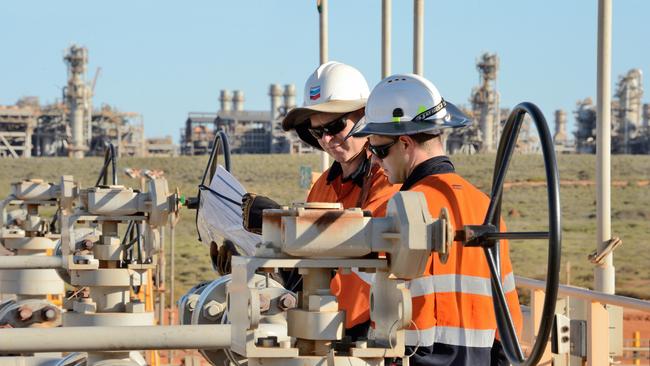Between a rock and a hard place on LNG
When it comes to tackling the east coast gas supply problem, Australia’s politicians are finding they can’t change geology.

When it comes to tackling the east coast gas supply problem, Australia’s politicians are finding they can change policy — but they can’t change geology.
The federal government last week revealed its latest suite of measures aimed at reducing gas prices and providing more relief to manufacturers, who have warned their businesses are at risk.
The government’s latest moves include considering a national gas reservation scheme, potentially replicating the West Australian policy that requires all new gas export projects to set aside a slice of their output for domestic use.
A few years ago news the federal government was exploring a gas reservation scheme would have prompted howls of opposition from the industry.
Instead, the announcement was met with relative calm and acceptance. There are several reasons for the measured response.
First, the oil and gas industry has read the political tea leaves.
The sector knows all too well how public sentiment has moved against it in recent years and knows the government needs to be seen to be taking action.
Second, the government made it clear any gas reservation policy would only apply to new projects.
Existing liquefied natural gas plants in Queensland, which have borne the brunt of the blame for the current market tension, would be protected from having to carve out a chunk of existing exports for local buyers.
And, with zero likelihood of another new LNG export terminal being built on the east coast any time soon, there are instead a growing number of proposals for LNG import terminals — and there aren’t any big planned investments that would suddenly be at direct risk under a future reservation policy.
Third, all the big east coast producers have already taken steps to build their domestic supply — not just because of the political climate, but also in response to the market dynamics. Domestic spot gas prices are high at the same time as international LNG spot prices are low, and market forces are doing the rest.
Fourth, and perhaps most importantly, the federal government has made it clear that any reservation policy would also require states such as NSW and Victoria to drop their opposition to onshore gas drilling.
The oil and gas industry has been pushing hard for access to prospective areas that have been cut off by state governments, arguing that opening up new fields close to major population centres is the best way to bring down energy prices.
In that way, the latest overtures from the federal government represent a 1-1 draw between the oil and gas industry — which is now closer to getting the roadblocks in NSW and Victoria lifted — and the manufacturers who have long been calling for a reservation policy.
One thing the government cannot control, however, is the nature of the rocks that host the gas resources and reserves up and down the eastern states. Western Australia has long been Exhibit A for those advocating for the introduction of nationwide gas reservation policy.
The Labor government of Alan Carpenter backs in 2006 introduced the policy, requiring gas exporters to set aside 15 per cent of their production for local customers and has since been widely credited with keeping the state’s gas prices low.
But, as Credit Suisse analyst Saul Kavonic told The Weekend Australian, both the geology and the market of Western Australia are vastly different to those of the east coast.
The large-scale LNG projects of WA are fed by massive offshore gas fields. Those projects have huge upfront costs but comparatively minimal ongoing costs, meaning it is relatively cheap to set aside additional gas for domestic consumption. East coast-coal seam gas fields, in contrast, require the constant, ongoing drilling of additional wells to maintain output, meaning underlying extraction costs are far higher per gas molecule than their WA counterparts.
WA’s gas market is also a fraction the size of that on the east coast, meaning a more modest reservation policy can secure adequate supply.
“The domestic market in WA is much smaller and the projects on the west coast have very low ongoing costs. On the east coast it’s completely different. The domestic market is much larger and the ongoing cost of bringing in additional supply is really expensive,” Mr Kavonic said.
“The east coast market is fundamentally a much more complicated, interconnected market such that a gas reservation policy would be an administrative nightmare to the point it would likely be unworkable.”
That higher underlying production cost in the coal-seam gas fields that underpin Queensland’s LNG industry mean that, for as long as the east coast relies on those same fields for much of its supply, gas prices will not return to their historical lows — regardless of what sort of reservation policy is eventually introduced.


To join the conversation, please log in. Don't have an account? Register
Join the conversation, you are commenting as Logout